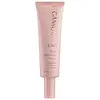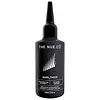What's inside
What's inside
 Key Ingredients
Key Ingredients

 Benefits
Benefits

 Concerns
Concerns

 Ingredients Side-by-side
Ingredients Side-by-side

Water
Skin ConditioningPropanediol
SolventPentylene Glycol
Skin ConditioningGlycerin
HumectantSclerocarya Birrea Seed Oil
HumectantAlcohol Denat.
AntimicrobialAdansonia Digitata Seed Oil
EmollientDicaprylyl Carbonate
EmollientZinc PCA
HumectantInulin Lauryl Carbamate
Emulsion StabilisingCaffeine
Skin ConditioningXanthan Gum
EmulsifyingTocopherol
AntioxidantGlycine Soja Seed Extract
Skin ConditioningSodium Phytate
Epilobium Angustifolium Extract
Skin ConditioningSodium Hydroxide
BufferingParfum
MaskingLimonene
PerfumingSr-Spider Polypeptide-1
Skin ProtectingPhenoxyethanol
Preservative1,2-Hexanediol
Skin ConditioningCaprylyl Glycol
EmollientLinalool
PerfumingAlcohol
AntimicrobialSodium Metabisulfite
AntioxidantWater, Propanediol, Pentylene Glycol, Glycerin, Sclerocarya Birrea Seed Oil, Alcohol Denat., Adansonia Digitata Seed Oil, Dicaprylyl Carbonate, Zinc PCA, Inulin Lauryl Carbamate, Caffeine, Xanthan Gum, Tocopherol, Glycine Soja Seed Extract, Sodium Phytate, Epilobium Angustifolium Extract, Sodium Hydroxide, Parfum, Limonene, Sr-Spider Polypeptide-1, Phenoxyethanol, 1,2-Hexanediol, Caprylyl Glycol, Linalool, Alcohol, Sodium Metabisulfite
Water
Skin ConditioningIsopentyldiol
HumectantGlycerin
HumectantInulin
Skin ConditioningBenzyl Alcohol
Perfuming1,2-Hexanediol
Skin ConditioningPolyglyceryl-3 Laurate
EmulsifyingLactitol
HumectantXylitol
HumectantAcrylates/C10-30 Alkyl Acrylate Crosspolymer
Emulsion StabilisingPropanediol
SolventRosmarinus Officinalis Leaf Oil
MaskingSalvia Sclarea Oil
MaskingCaprylhydroxamic Acid
Mentha Piperita Oil
MaskingSodium Phytate
Sodium Hydroxide
BufferingGlycine
BufferingLarix Europaea Wood Extract
HumectantSodium Metabisulfite
AntioxidantEclipta Prostrata Extract
Skin ConditioningPhyllanthus Emblica Fruit Extract
HumectantBacopa Monnieri Extract
Skin ConditioningCamellia Sinensis Leaf Extract
AntimicrobialZinc Chloride
AntimicrobialLactic Acid
BufferingMaltodextrin
AbsorbentSodium Levulinate
Skin ConditioningLactobacillus Ferment
Skin ConditioningLinalool
PerfumingLimonene
PerfumingWater, Isopentyldiol, Glycerin, Inulin, Benzyl Alcohol, 1,2-Hexanediol, Polyglyceryl-3 Laurate, Lactitol, Xylitol, Acrylates/C10-30 Alkyl Acrylate Crosspolymer, Propanediol, Rosmarinus Officinalis Leaf Oil, Salvia Sclarea Oil, Caprylhydroxamic Acid, Mentha Piperita Oil, Sodium Phytate, Sodium Hydroxide, Glycine, Larix Europaea Wood Extract, Sodium Metabisulfite, Eclipta Prostrata Extract, Phyllanthus Emblica Fruit Extract, Bacopa Monnieri Extract, Camellia Sinensis Leaf Extract, Zinc Chloride, Lactic Acid, Maltodextrin, Sodium Levulinate, Lactobacillus Ferment, Linalool, Limonene
Ingredients Explained
These ingredients are found in both products.
Ingredients higher up in an ingredient list are typically present in a larger amount.
1,2-Hexanediol is a synthetic liquid and another multi-functional powerhouse.
It is a:
- Humectant, drawing moisture into the skin
- Emollient, helping to soften skin
- Solvent, dispersing and stabilizing formulas
- Preservative booster, enhancing the antimicrobial activity of other preservatives
Glycerin is already naturally found in your skin. It helps moisturize and protect your skin.
A study from 2016 found glycerin to be more effective as a humectant than AHAs and hyaluronic acid.
As a humectant, it helps the skin stay hydrated by pulling moisture to your skin. The low molecular weight of glycerin allows it to pull moisture into the deeper layers of your skin.
Hydrated skin improves your skin barrier; Your skin barrier helps protect against irritants and bacteria.
Glycerin has also been found to have antimicrobial and antiviral properties. Due to these properties, glycerin is often used in wound and burn treatments.
In cosmetics, glycerin is usually derived from plants such as soybean or palm. However, it can also be sourced from animals, such as tallow or animal fat.
This ingredient is organic, colorless, odorless, and non-toxic.
Glycerin is the name for this ingredient in American English. British English uses Glycerol/Glycerine.
Learn more about GlycerinLimonene is a fragrance that adds scent and taste to a formulation.
It's found in the peel oil of citrus fruits and other plants such as lavender and eucalyptus. The scent of limonene is generally described as "sweet citrus".
Limonene acts as an antioxidant, meaning it helps neutralize free radicals.
When exposed to air, oxidized limonene may sensitize the skin. Because of this, limonene is often avoided by people with sensitive skin.
The term 'fragrance' is not regulated in many countries. In many cases, it is up to the brand to define this term. For instance, many brands choose to label themselves as "fragrance-free" because they are not using synthetic fragrances. However, their products may still contain ingredients such as essential oils that are considered a fragrance.
Learn more about LimoneneLinalool is a fragrance and helps add scent to products. It's derived from common plants such as cinnamon, mint, citrus, and lavender.
Like Limonene, this ingredient oxidizes when exposed to air. Oxidized linalool can cause allergies and skin sensitivity.
This ingredient has a scent that is floral, spicy tropical, and citrus-like.
Learn more about LinaloolPropanediol is an all-star ingredient. It softens, hydrates, and smooths the skin.
It’s often used to:
Propanediol is not likely to cause sensitivity and considered safe to use. It is derived from corn or petroleum with a clear color and no scent.
Learn more about PropanediolSodium Hydroxide is also known as lye or caustic soda. It is used to adjust the pH of products; many ingredients require a specific pH to be effective.
In small amounts, sodium hydroxide is considered safe to use. However, large amounts may cause chemical burns due to its high alkaline.
Your skin has a natural pH and acid mantle. This acid mantle helps prevent harmful bacteria from breaking through. The acid mantle also helps keep your skin hydrated.
"Alkaline" refers to a high pH level. A low pH level would be considered acidic.
Learn more about Sodium HydroxideSodium metabisulfite is also known as Sodium Pyrosulfite. It is a preservative, antioxidant, and disinfectant.
As a preservative, it helps stabilize cosmetic formulas without affecting their color or scent.
Sodium Phytate is the synthetic salt form of phytic acid. Phytic acid is an antioxidant and can be found in plant seeds.
Sodium Phytate is a chelating agent. Chelating agents help prevent metals from binding to water. This helps stabilize the ingredients and the product.
Water. It's the most common cosmetic ingredient of all. You'll usually see it at the top of ingredient lists, meaning that it makes up the largest part of the product.
So why is it so popular? Water most often acts as a solvent - this means that it helps dissolve other ingredients into the formulation.
You'll also recognize water as that liquid we all need to stay alive. If you see this, drink a glass of water. Stay hydrated!
Learn more about Water